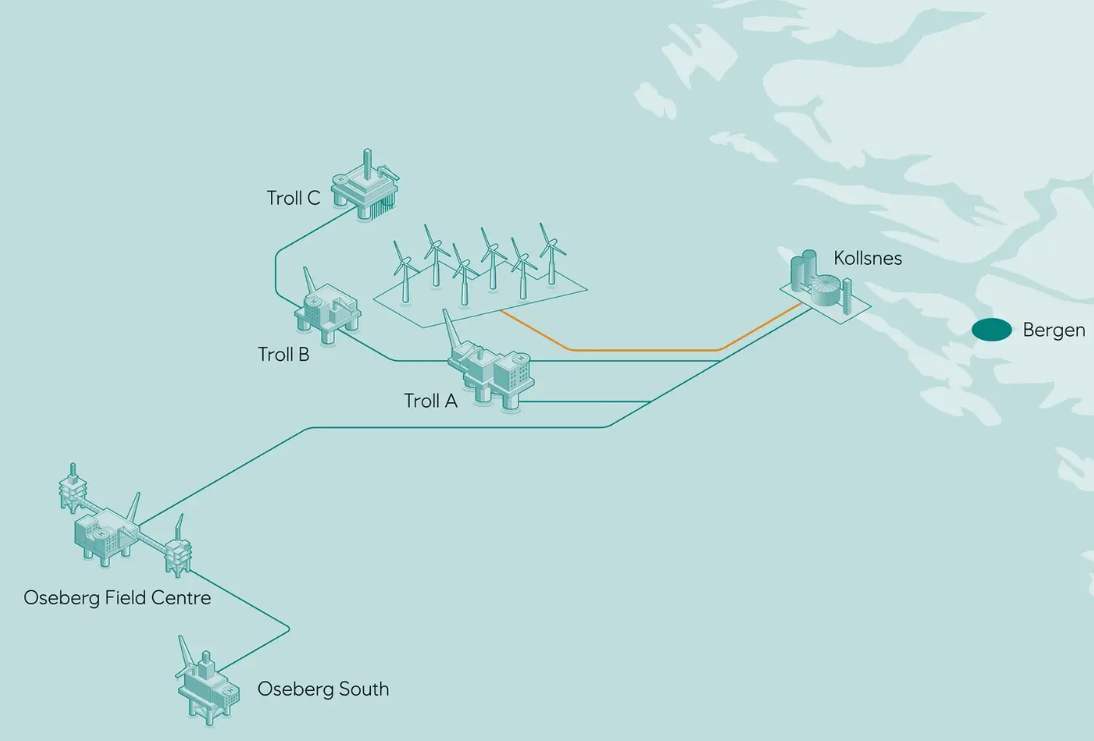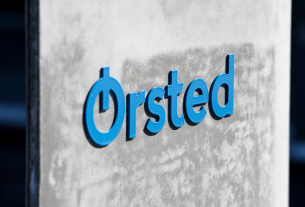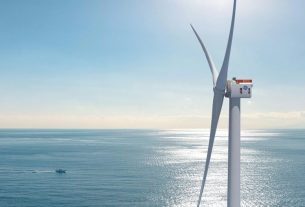Norway – Equinor and its Troll and Oseberg field partners Petoro, TotalEnergies, Shell, and ConocoPhillips have started a study and are looking into options for constructing a floating offshore wind farm in the Troll area west of Bergen, Norway.
Trollvind could provide much of the electricity needed to run the offshore fields Troll and Oseberg through an onshore connection point, with an installed capacity of about 1 GW and an annual production of 4.3 TWh and a start-up in 2027. The Bergen area already provides power to several of these facilities, but it requires more input into its electricity grid. The partnership intends to buy as much energy as the wind farm can produce at a price that allows the project to proceed.
Trollvind’s power could help electrify oil and gas installations, speed up offshore wind development in Norway, and provide additional power to the Bergen region.
Government – industry collaboration
The Norwegian parliament (Stortinget) decided in 2020 to increase the requirement for emission reductions from the Norwegian continental shelf from 40% to 50% by 2030. Large-scale industrial single-point emission sources, such as offshore oil and gas installations, must reduce their emissions in order to meet this goal. Electrification of installations with long remaining lives will be a critical initiative for this transition to succeed.
Trollvind can be realized by building on the successful collaboration between government and industry that Hywind Tampen has established. While identifying and implementing good co-existence solutions from an early stage, experience and learning can be transferred and utilized.
Commercial arrangements
The ability to build a larger wind farm than one directly connected to offshore oil and gas installations may be enabled by transferring offshore wind power to shore. Increased wind farm size is a critical component of industrializing floating offshore wind and lowering costs. Bringing the power to shore also allows for better interaction with regulated hydropower and onshore industry, resulting in more efficient power usage. Improved power access in this area also means improved supply security for oil and gas installations.
The partners are evaluating commercial arrangements in which the Trollvind development sells power to the Troll, Oseberg, and Kollsnes plants. Trollvind will not require any additional financial assistance. Trollvind is estimated to be able to deliver power for less than NOK 1/kWh. In an area where the power situation is strained, such an agreement would ensure greater long-term access to power at a stable price. At the same time, ensure that the wind farm will generate enough revenue to justify the investment.
Trollvind is now being further developed by the Troll and Oseberg partners, who have begun feasibility studies in preparation for a 2023 investment decision.




